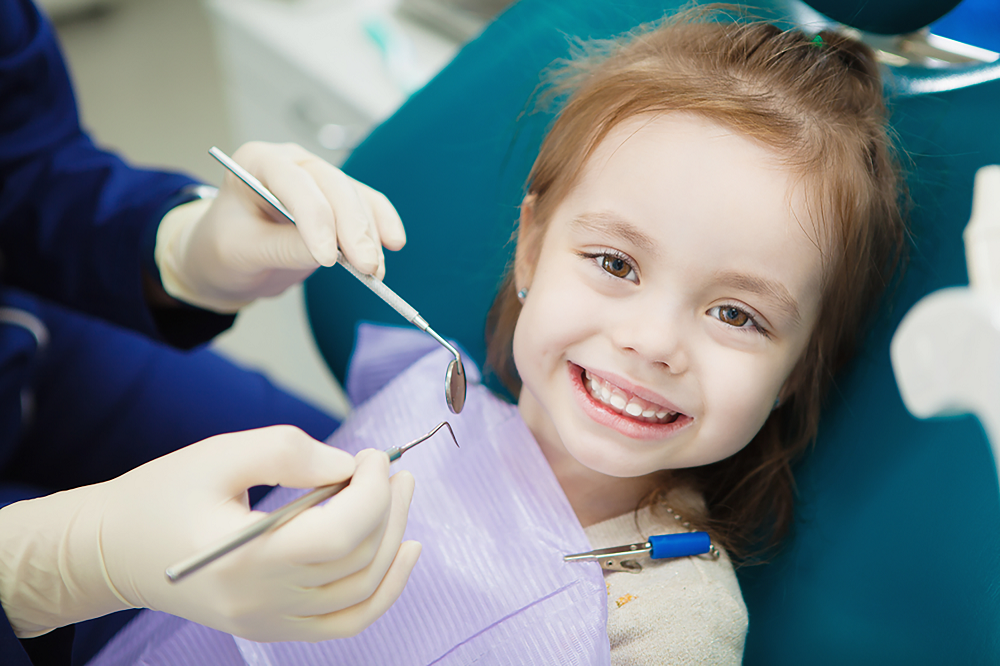A Comprehensive Guide to the Different Therapy Options Readily Available in Pediatric Dentistry for Children
In pediatric dental care, understanding the diverse therapy options offered is essential for making sure optimum oral health and wellness in youngsters. From preventive treatment approaches that establish a foundation for long-lasting oral health to restorative treatments that attend to prompt concerns, the variety of solutions is comprehensive. Furthermore, orthodontic options and specialized strategies for children with distinct requirements better boost the scope of practice. As we check out these different choices, it comes to be clear that customized treatment is not just valuable yet necessary for fostering a positive dental experience. What specific factors to consider should lead these treatment options for young clients?
Preventive Care Options
Preventative treatment choices in pediatric dentistry are vital for preserving children's dental wellness and stopping future dental problems. These strategies concentrate on informing both children and moms and dads regarding proper dental hygiene practices, nutritional options, and regular oral sees.
One of the key elements of preventive treatment is routine dental examinations, usually recommended every 6 months. During these visits, oral professionals can recognize prospective problems early, supply cleanings, and use fluoride treatments to reinforce enamel and decrease the risk of tooth cavities. Additionally, oral sealants might be related to the chewing surface areas of molars, serving as a safety obstacle against degeneration.
Education on correct brushing and flossing techniques is also essential. Moms and dads are encouraged to supervise their youngsters's oral hygiene routines up until they develop the dexterity to do so individually. Additionally, nutritional therapy can assist family members understand the effect of sweet snacks and beverages on oral wellness, promoting healthier selections.
Restorative Treatments
Attending to oral issues that occur regardless of preventive steps, corrective therapies in pediatric dentistry play a vital duty in restoring a kid's dental wellness. These treatments are developed to fix and refurbish teeth impacted by degeneration, trauma, or developmental abnormalities.

Common restorative alternatives consist of dental fillings, crowns, and pulpotomies. Oral dental fillings are utilized to treat dental caries by removing decayed cells and loading the area with products such as composite material or oral amalgam. For more comprehensive degeneration or architectural damages, crowns might be recommended to provide stamina and security. Pediatric crowns are usually crafted from stainless-steel or tooth-colored products to ensure sturdiness and aesthetics.
In cases where the oral pulp is influenced, a pulpotomy may be required to alleviate discomfort and stop additional infection. This procedure entails the elimination of the infected pulp and securing the tooth to protect its function.
Orthodontic Solutions
Orthodontic solutions are crucial in correcting and straightening teeth bite problems in children, making certain ideal oral wellness and function. Pediatric orthodontics concentrates on the unique oral growth of adolescents and youngsters, resolving worries such as overcrowding, jaw, and misalignment discrepancies.
Very early assessment, normally recommended by age 7, enables prompt treatment, which can avoid extra complicated concerns in the future. Common orthodontic home appliances consist of braces, retainers, and room maintainers. Traditional metal dental braces are frequently made use of for their effectiveness in remedying numerous dental issues, while clear aligners supply a visit more aesthetic alternative for older teenagers and youngsters.
In certain situations, interceptive orthodontics might be employed, where particular therapies are launched to guide the growth of the jaw and teeth. This positive approach can decrease the demand for considerable orthodontic work later on. Furthermore, practical devices might be used to improve jaw relationships and improve facial balance.
Sedation Dental Care
Using sedation dentistry can considerably minimize stress and anxiety and discomfort in pediatric patients throughout oral procedures (kids dentist). This method is particularly beneficial for children that fear concerning oral sees or need comprehensive treatment that may be uncomfortable. Sedation strategies differ, ranging from moderate sedation with nitrous oxide (laughing gas) to much deeper sedation approaches provided intravenously
Nitrous oxide is a common selection, as it is secure, efficient, and enables quick recovery. It induces a relaxing result, enabling youngsters to remain loosened up throughout the treatment while still being able to connect with the dental group. For more complex therapies, oral sedation or basic anesthesia may be considered, specifically for youngsters with unique needs or those that may not work together throughout treatment.

Unique Requirements Dental Care
For many children with special demands, oral gos to can be particularly challenging as a result of sensory level of sensitivities, communication obstacles, or clinical problems that require customized strategies. Unique demands dentistry is a specialized area that focuses on providing extensive dental take care of youngsters with different physical, developing, or psychological difficulties.
Experts in this location are trained to recognize the unique needs of these clients, using methods to decrease anxiousness and discomfort. This may consist of using visual help, social tales, and hands-on demonstrations to help children understand the oral treatments. Additionally, the environment is often adapted to suit sensory sensitivities, creating a much more welcoming and much less challenging room.

Eventually, the objective of unique demands dental care is to promote positive tooth implant oral experiences, advertise dental health, and establish a foundation for lifelong treatment, enabling kids with unique demands to attain ideal oral wellness.
Conclusion
In recap, pediatric dental care incorporates a wide array of therapy choices important for promoting and keeping children's dental health and wellness. Precautionary care establishes a foundation for lifelong dental health, while corrective therapies address existing oral problems. Orthodontic options promote proper jaw growth, and sedation dental care enhances convenience throughout treatments. In addition, specialized look after children with special demands makes sure positive experiences and encourages continuous dental health. Jointly, these strategies play a vital duty in supporting the dental wellness of all kids.
Oral dental fillings are utilized to treat tooth cavities by eliminating corroded tissue and loading the room with products such as composite material or dental amalgam. Conventional metal dental braces are often utilized for their performance in correcting various dental issues, while clear aligners provide an even more visual choice for older children and teens.
It causes a calming effect, enabling children to stay unwinded throughout the treatment while still being able to interact with the oral team. Preventive care develops a structure for lifelong oral hygiene, while restorative treatments attend to existing oral problems. Collectively, these approaches play a vital function in supporting the oral health of all children.